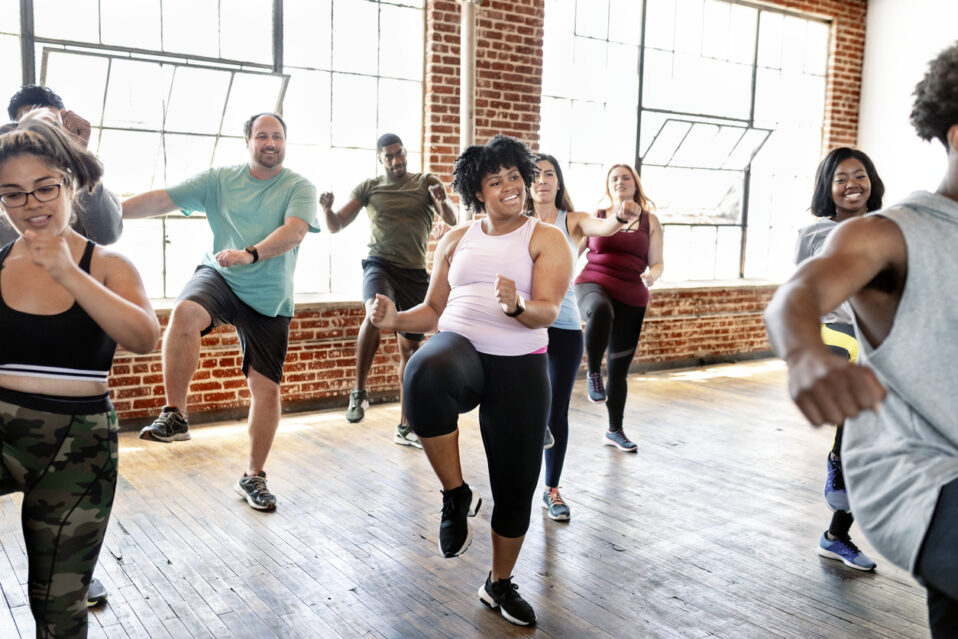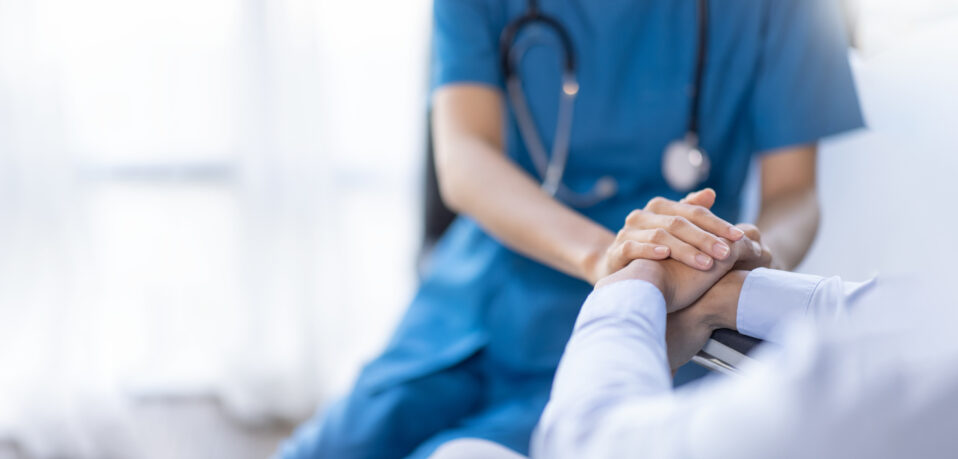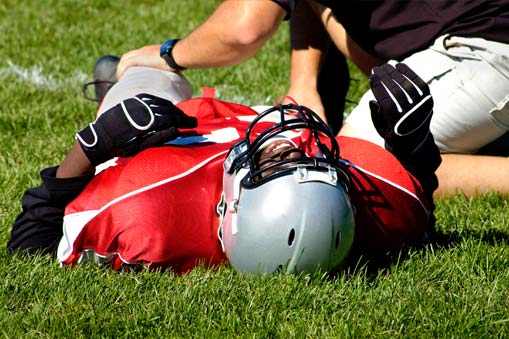Summarized by Esha Patel, DO Concussions can occur after hitting your head really hard. Concussions can affect sleep. Problems with sleep can affect mood, function, and quality of life. This can make patients miss school, work, and extracurricular activities. The article “Exercising more than 150 minutes per week after concussion is associated with sleep quality improvements” published in The Journal of Head Trauma Rehabilitation showed how exercise can help sleep. The study split 36 kids into 2 groups. All the kids were under the age of 18 and had concussions in the past 3 weeks. They still had symptoms of a concussion. They all wore devices on their wrist that tracked their movement. One group exercised less than 150 minutes a week. The second group exercised more than 150 minutes a week. The study lasted 1 month. The kids did aerobic exercise which increases the oxygen the body uses. Examples of aerobic exercise are walking, running, swimming, dance, or bicycling. Before and after the study, the kids filled out the “Pittsburgh Sleep Quality Index” survey. Some questions included how many hours they slept, if they had trouble falling asleep, or if they felt tired during the day. Kids who did more than 150 minutes per week of aerobic exercise had better sleep after 1 month. It also helped decrease symptoms of low mood and dizziness. The biggest change was seen 5 weeks after the study started. Exercise can be another tool to help patients with concussions sleep better. Patients should start aerobic exercise as early as possible after the concussion. They should aim to exercise more than 150 minutes per week. https://pubmed.ncbi.nlm.nih.gov/38032838/
RWJBarnabas Health New Jersey State Concussion Summit, co-sponsored by BIANJ
Attend to learn more about concussion innovations and technology, updates on the international consensus, concussion nutrition, mental health effects and more!
Does Vestibular-Ocular-Motor Impairment Affect Time to Return to Play, Symptom Severity, Neurocognition and Academic Ability in Student Athletes Following Acute Concussion?
Summarized by Dr. Ally Ferber, MD February 2024 The article talks about athletes who experience a concussion while playing sports. A concussion is a type of brain injury that can happen when the head is hit hard or moves very quickly. This impact can lead to changes in how the brain works, affecting the cells (neurons) and causing different symptoms. The article focuses on symptoms related to the vestibular-ocular-motor (VOM) system and how they impact an athlete’s return to sports and school performance. The VOM system involves balance, vision, and movement. If this system is disrupted, it can cause issues like dizziness, nausea, blurred vision, and difficulty reading. Testing for problems in the VOM system isn’t common yet, but the article suggests it could be helpful. Using a screening tool to identify athletes with balance, vision, and movement issues, they found that those with symptoms in this system took longer to recover, had more severe symptoms, missed more school, and needed more time overall to get better. In summary, using the VOM screening tool in the first two weeks after a sports-related concussion might help doctors identify athletes with specific issues. This can give athletes and their families an idea of how long the recovery might take, when they can return to sports, and when they can go back to school. It also allows doctors to recommend specific exercises to help athletes heal better. https://pubmed.ncbi.nlm.nih.gov/33896286/
Early Initiation of Vestibular Therapy Following Sports-Related Concussions: A Retrospective Cohort Study
Summarized by Arielle Berkowitz, DO November 2023 When a player experiences a bump to the head during a sports game or practice, he/she may begin to experience headaches, dizziness, blurred vision, trouble concentrating, or a brief loss of consciousness known as a Sports Related Concussion (SRC). These symptoms are often troubling and may make it difficult to immediately return to school, work, and/or sports. SRC can occur at any age and at any level of athletic training. Recovery after a SRC is different for each individual. Athletes who are female, who have had prior concussions, learning disabilities, and/or psychiatric illness may have more trouble returning to their normal daily activities. During this tough time, it is important to follow with experts who can help with the recovery process and provide education, guidance, and encouragement. In the past, it was recommended that athletes who have sustained a SRC completely rest their minds and body- avoiding television, phones, computers, and school-work- so that their brains could fully heal. More recent guidelines advise light activity/work during this recovery period. In most states, athletes are required to progress through a daily exercise schedule with a trained professional for one whole week. During this time, the athlete must perform exercises with increasing intensity with close monitoring of symptoms. Vestibular therapy is a therapy that is often offered to patients who continue to experience symptoms such as dizziness and balance issues weeks after their injury. With vestibular therapy, patients work closely with physical therapists to improve things such as balance and vision. In a recent article, “Early Initiation of Vestibular Therapy Following Sport-Related Concussions: A Retrospective Cohort Study,” by Ferry et al., the authors wanted to determine whether or not starting vestibular therapy shortly after injury would result in a faster recovery. In this study, the researchers reviewed the medical charts of patients ages 12-25 years who had a SRC between January 2014-December 2019, were seen in the Sports Medicine Concussion Clinic at Duke University and were referred to PT for vestibular therapy. Results from this study suggested that waiting to start vestibular therapy could increase the time to recovery and return to sport. In other words, starting vestibular therapy early after injury could result in a quicker recovery. After SRC, it is important to seek appropriate care early. Although we still need more details regarding exactly how long a person should receive vestibular therapy, how frequently he/she should go for visits, and when to begin the therapy, it is noted that, overall, it is extremely helpful without any detrimental effects. For more information view the article https://doi.org/10.7759/cureus.39764
Watch with BIANJ: Live Concussion Documentary Screening
In recognition of National Concussion Awareness Day, the Brain Injury Alliance of New Jersey will be livestreaming Bell Ringer: The Invisible Brain Injury on Friday, September 16 starting at 3 PM. Join us to watch this award-winning PBS documentary, which is approximately one hour long and will be streamed live via Zoom. A brief optional discussion will immediately follow. Seating is limited for this free screening. Reserve your spot today.
Free Webinar: Back-to-School Update – A Comprehensive Approach to Athlete Brain Health and Concussion
With the start of a new school year, children across New Jersey will be resuming interscholastic sports participation. This webinar will provide an updated overview of the current best practices for diagnosis and management of concussion and post-concussion syndrome with an emphasis on overall athlete brain health. There will be a specific focus on what is most important to understand for school personnel (teachers, coaches, etc.) and parents of youth and high school athletes. This webinar will be held via Zoom. Click here to register today!
WEBINAR: Back to School Update – A Comprehensive Approach to Athlete Brain Health and Concussion
With the start of a new school year, children across New Jersey will be resuming interscholastic sports participation. This webinar will provide an updated overview of the current best practices for diagnosis and management of concussion and post-concussion syndrome with an emphasis on overall athlete brain health. There will be a specific focus on what is most important to understand for school personnel (teachers, coaches, etc.) and parents of youth and high school athletes.




